The Best Haunted House Movies Ever
Dark and scary houses are iconic within the horror genre. Collected here are the very best haunted house movies ever, along with a brief history of how the genre formed and developed over time.
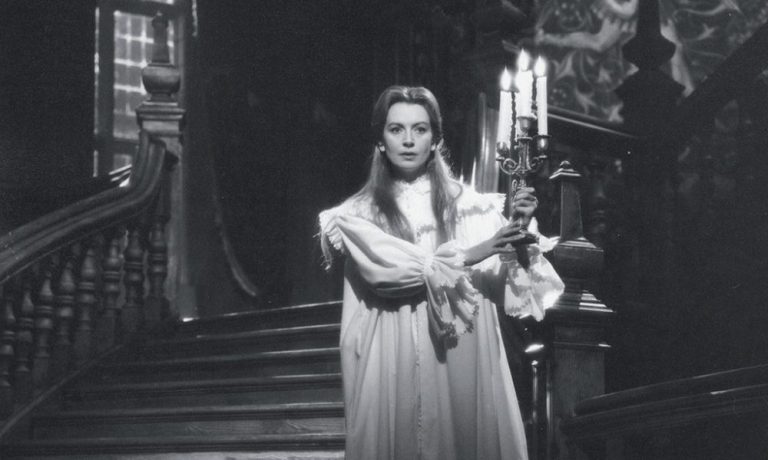
Table of Contents
Best Haunted House Movies Ever
The Uninvited (1944)
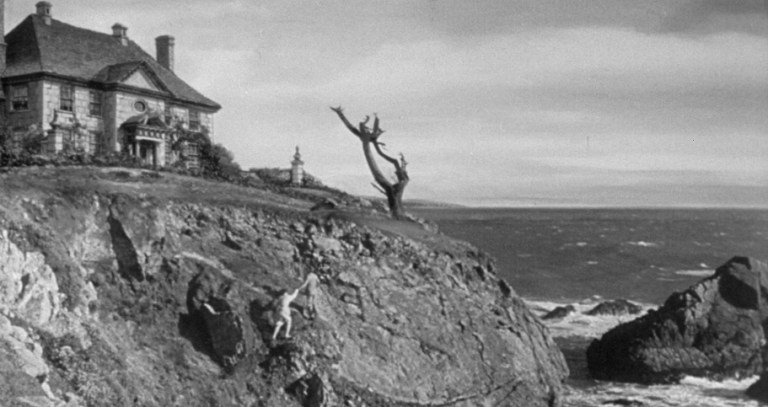
The Uninvited (1944) holds a distinct place in cinema history as one of the best early examples of a haunted house movie that embraces its supernatural elements. Instead of pulling back the curtain in the final act to reveal that all of the ghostly happenings were the result of human trickery, The Uninvited quickly and firmly establishes the fact that the haunting is real. That allows the movie to progress in a serious manner where the mystery isn’t about who is causing the haunting, but instead why the haunting is taking place.
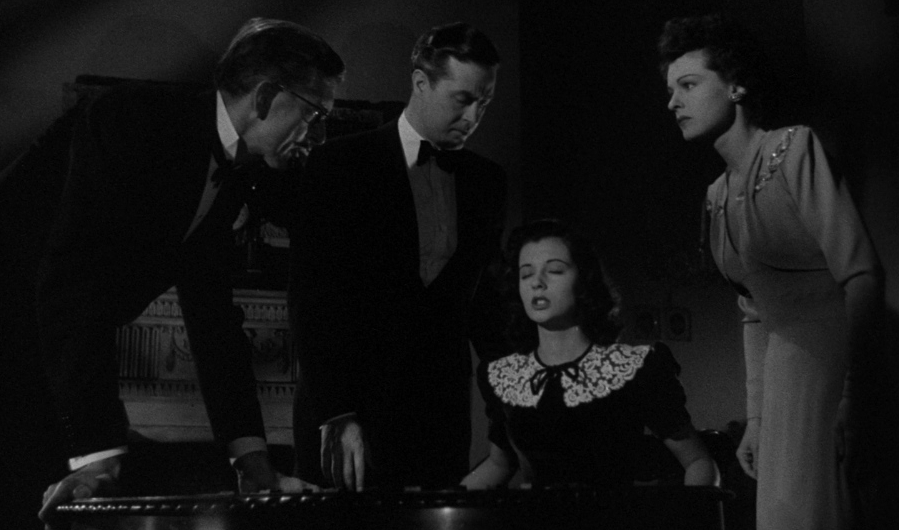
The Uninvited is about a brother and sister, Rick (Ray Milland) and Pamela Fitzgerald (Ruth Hussey), who become enamored with a seaside house while on vacation in England. Shortly after buying the house, they realize there is a presence living inside. Stella (Gail Russell), the granddaughter of the former owner of the house, befriends the Fitzgeralds and visits them often, but it soon becomes clear that Stella has a connection to the ghostly presence. The Uninvited is a fantastic haunted house movie that finds a near-perfect balance of spookiness and mystery.
The Innocents (1961)
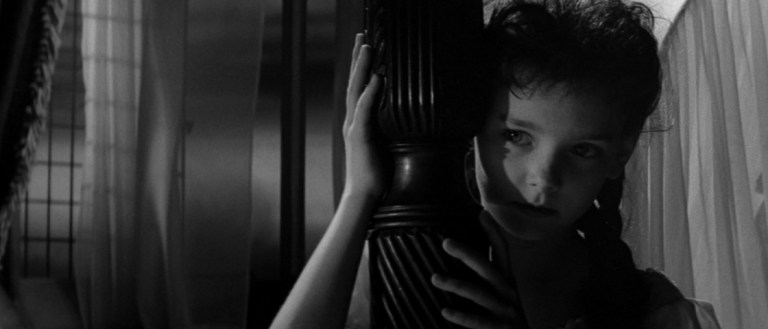
While most other haunted house movies of its time were giving audiences comedy, mysteries, or gimmicks, The Innocents (1961) stood out for its masterful usage of psychological horror. Set in Victorian England, The Innocents stars Deborah Kerr as Miss Giddens, a governess who takes a job caring for two orphaned children, Flora and Miles, at a huge and isolated mansion. Miss Giddens gradually becomes convinced that something strange is happing after seeing and hearing people in the house and on its grounds whom no one else acknowledges, and she is increasingly concerned that a malevolent force is focused on the children.
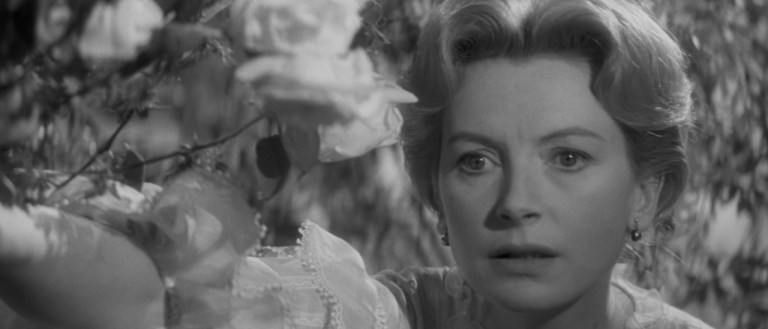
Director Jack Clayton and cinematographer Freddie Francis teamed up to create a wonderfully atmospheric haunted house movie. The house, known as Bly Manor, is shot in such a way that it feels expansive yet claustrophobic at the same time. Clayton wanted to emphasize the mental deterioration of Miss Giddens throughout the film, and he meticulously staged the ghostly aspects of the movie so the audience would be kept wondering if what they were seeing was real or a figment of Miss Giddens’ imagination. And at the center of it all, Deborah Kerr gives the performance of her career in this wonderful film that can be interpreted in multiple ways.
The Haunting (1963)
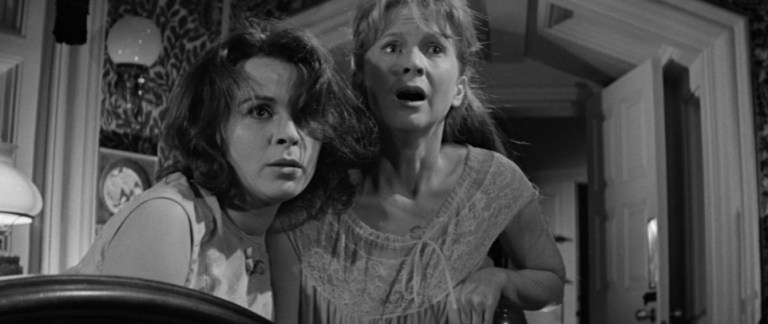
Academy Award winning director Robert Wise brought to the screen one of the greatest haunted house movies ever with The Haunting (1963). Based on the Shirley Jackson novel The Haunting of Hill House (1959), The Haunting tells the story of four people who stay at a notoriously haunted mansion known as Hill House in order to investigate the supposed supernatural activity contained within. Dr. Markway (Richard Johnson) leads the investigation with a scientific approach, and he is joined by a psychic, Theo (Claire Bloom), the heir to the house, Luke (Russ Tamblyn), and Eleanor (Julie Harris), a woman sensitive to paranormal phenomena. Over the course of a few days, Eleanor becomes the focus of increasingly disturbing supernatural and psychological events.
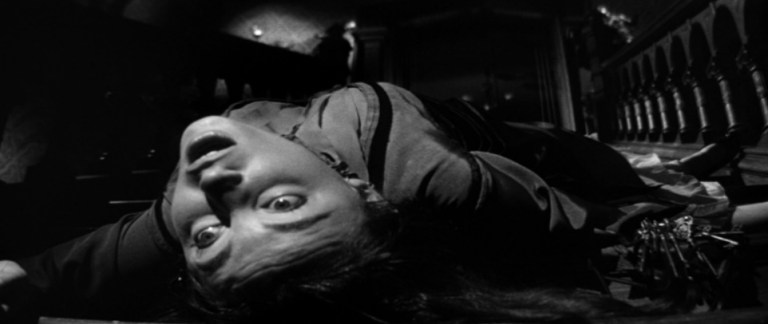
The genius of The Haunting isn’t about what you see in the film, it’s about what you don’t see. Most of the supernatural elements of the movie are portrayed through sound, some subtle movements, and the reactions of the characters. In this way, The Haunting focuses on the terror of things left unseen rather than giving the audience a release by showing them a ghost that may or may not be as frightening as what they’re imagining. The magic of the film is also in the way it is shot and edited. Many subtle tricks are used to keep viewers disoriented about the geography of the house, as well as to make everything about the house feel slightly odd. Like it is stated in the movie, Hill House feels like is was “born bad.”
The Legend of Hell House (1973)
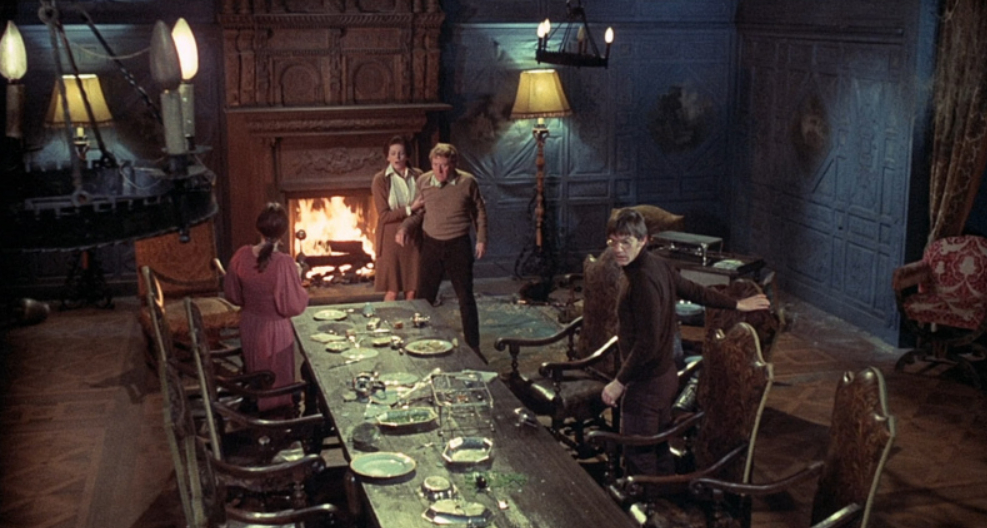
Many of the more successful haunted house movies prior to 1973 used subtlety in portraying their hauntings, but The Legend of Hell House (1973) stands out for its strong and direct approach to horror. Tables shake violently, furniture and glassware are thrown across rooms, people and animals are possessed, and the house itself very explicitly tries to murder its occupants. While this approach to a haunted house movie doesn’t always work, The Legend of Hell House manages to ground itself with an interesting story and some fine performances from its cast.
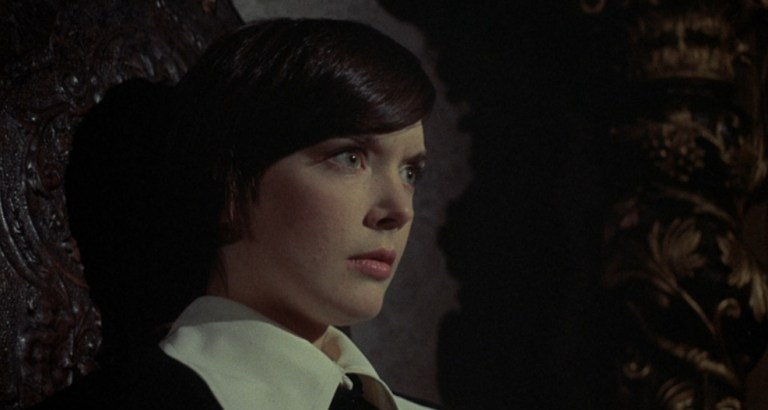
The movie features two psychics, Florence (Pamela Franklin) and Ben (Roddy McDowall), who join a physicist (Clive Revill) and his wife (Gayle Hunnicutt) at the Belasco House. Their task is to investigate the house and determine if there is such a thing as an afterlife. The mansion has an extremely dark history of torture, murder, and just about every human perversion happing within its walls, and previous investigations by other groups have led to insanity and death. The physicist, Dr. Barrett, has a plan based in science to deal with the paranormal energy in the house, but Florence believes the only way to deal with the haunting is to help the spirits move on. Their conflict leads to a series of dangerous and disturbing events that build to a deadly climax.
House (1977)

Celebrated for its inventiveness as well as its absurdity, House (1977, also referred to as Hausu) is a phenomenal Japanese film that takes a childlike inspiration for its scares. In fact, director Nobuhiko Obayashi consulted with his young daughter about what might scare her when compiling ideas for the story. The movie is about pretty and popular high school student Oshare (aka Gorgeous, played by Kimiko Ikegami) who travels to her aunt’s house for summer vacation. Oshare is accompanied by six of her friends, each with names that reflect their personality. As soon as they arrive at the old and overgrown home, things get very strange. One by one the girls start to disappear within the house thanks to bizarre supernatural events, leading the remaining girls to a fight for survival before the house swallows them as well.

As odd as it is, House is deeper than many people give it credit for. The film incorporates more themes than can be written about in a short space. Most prominently though, House incorporates some heavy subject matter involving loss and longing due to World War II and the bombings of Hiroshima and Nagasaki. It also features a meta layer that blurs the lines between reality and fiction through unique transitions and ways of relaying information such as movies within a movie. Also, it has dancing skeletons, laughing fruit, and a painting of a cat that vomits a flood of watery blood. It is difficult to do House justice in written form, and it is truly something that needs to be seen by all fans of Japanese films and/or haunted house movies.
The Amityville Horror (1979)

In 1979, The Amityville Horror became a huge success not only thanks to its frightening take on a haunted house movie, but also because of its relation to a mixture of true and sensationalized events. The movie is based on the 1977 book of the same name by Jay Anson. The book tells the supposedly true story of George and Kathy Lutz, a married couple who moved into a house in the village of Amityville in Long Island, New York. Twenty-eight days later, the family fled the house after claiming to suffer from a series of terrifying paranormal events. The reliability of the story the Lutz family told is debatable, but regardless, it became extremely well-known at the time.
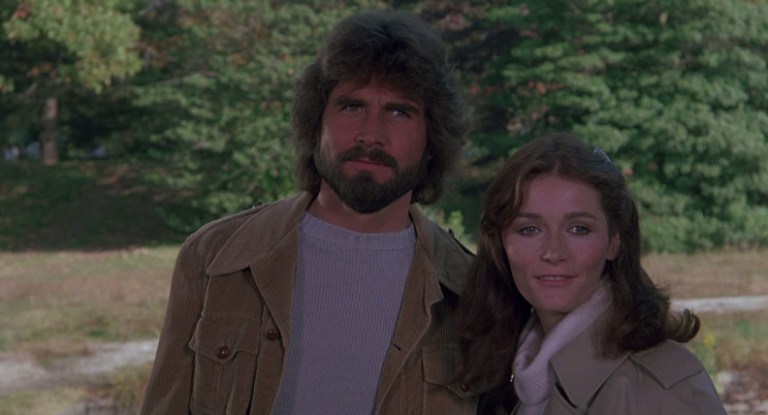
The movie essentially follows the same story as the book. The Lutz family moves into a home where, just about a year prior, a young man murdered his family. Strange occurrences begin almost immediately. The haunting manifests in a variety of familiar ways, including strange noises, voices, odd smells, moving objects, cold spots, and malfunctioning electronics. The sheer volume of scary moments can make The Amityville Horror tense viewing, and the intensity of the scares picks up dramatically in the later stages of the film. Modern viewers seeing it for the first time may feel like the movie is a bit cliché, but that’s because it was so influential on later haunted house movies.
The Changeling (1980)

The Changeling (1980) stars revered actor George C. Scott in his first horror movie. Scott plays John Russell, a composer who loses his wife and daughter in a tragic accident as the movie begins. Distraught, John moves into a mansion he gets at a bargain price with the intent of distracting himself from his grief by burying himself in work. However, the mansion’s dark history manifests in increasingly dangerous ways. Though somewhat unnerved by the paranormal activity in his new home, John is intent on solving the mystery behind its cause. The Changeling spends a great deal of time building up its mystery with just a few scares early in the film, but the final few scenes really build up the intensity for a highly memorable payoff.
Poltergeist (1982)

Poltergeist (1982) is horror with a Spielberg twist. It has a sizable budget (for the time) and glorious special effects by Industrial Light & Magic. By all accounts it has the appearance of a summer blockbuster on the level of something like E.T. the Extra-Terrestrial (which was released one week after Poltergeist in the United States in 1982). The main difference from other blockbusters of the time is that Poltergeist can be quite frightening, so frightening that it was initially given an R-rating before producer and co-writer Steven Spielberg and director Tobe Hooper petitioned for a PG.

Poltergeist begins with a familiar setup. A family moves into a new home and quickly begins to experience an increasing amount of unexplained phenomena. The family’s youngest daughter, Carol Anne (Heather O’Rourke) is the focus of the home’s supernatural activity. The house seems to want to make Carol Anne a permanent resident, and it falls on her parents (Craig T. Nelson and JoBeth Williams) to enlist the aid of a spiritual medium (the great Zelda Rubinstein) to free Carol Anne from the house’s grip. Don’t let the PG rating fool you; the horror in Poltergeist is incredibly effective and still gives viewers chills years after they’ve first seen it.
Beetlejuice (1988)
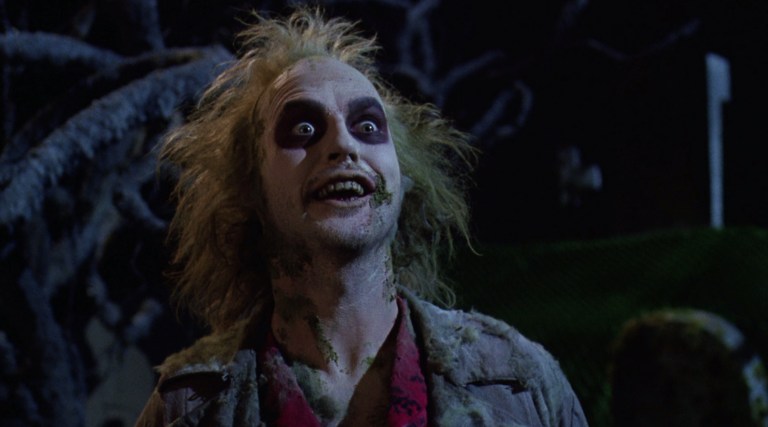
Not all great haunted house movies have to be scary. The comedic potential for haunted house movies goes back to the early days of cinema. In the extensive list of funny yet still kind of creepy haunted house movies, Beetlejuice (1988) has to rank near the top. The story focuses on Adam and Barbara Maitland (Alec Baldwin and Geena Davis) as a married couple who die and become trapped in their home as ghosts. Adam and Barbara attempt to scare away their house’s new occupants, the Deetz family, but all they succeed in doing is making friends with the youngest member of the Deetz family, Lydia (Winona Ryder). Desperate, the Maitlands contact Betelgeuse (Michael Keaton), a crude and wacky “bio-exorcist” who has his own agenda.
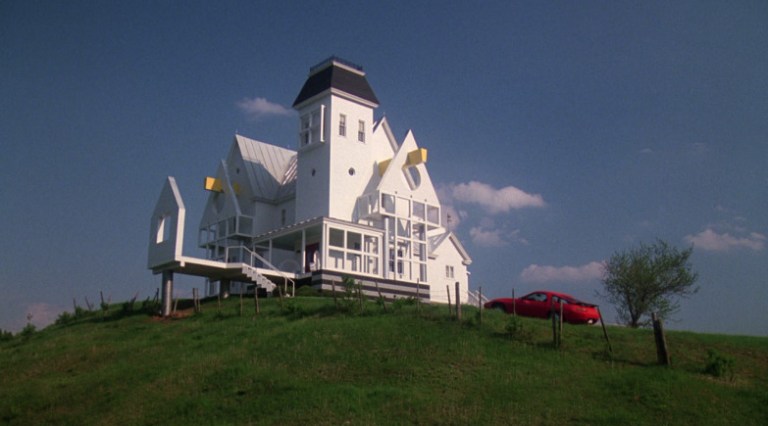
Beetlejuice was Tim Burton’s second feature film as a director following Pee-wee’s Big Adventure (1985), and the movie’s success was instrumental in getting Batman (1989) greenlit for production. The original script for Beetlejuice was much darker, with the story playing out as a more straightforward scare-fest with death and murder. Tim Burton had a number of rewrites done to better fit the kind of movie he wanted to make, and the result is something that feels like Tim Burton through and though. Beetlejuice is quirky, dark, and funny, with fantastical images and fantastic performances.
The Others (2001)
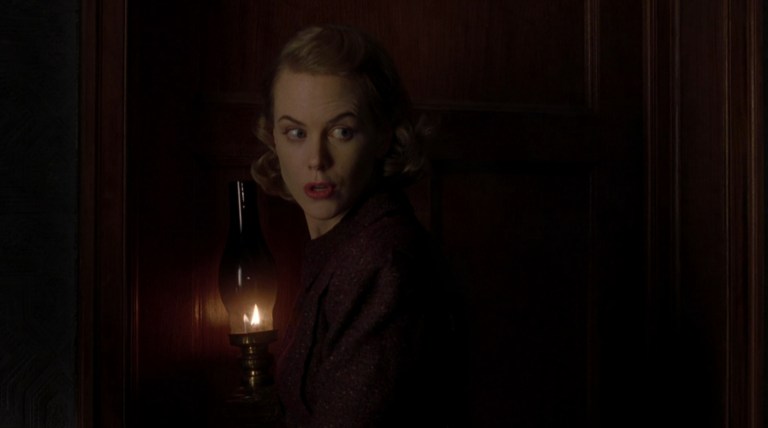
By the turn of the century, many of the more well-known haunted house movies in the Western world like The Haunting (1999) and House on Haunted Hill (1999) remade classic stories in a modern style. The Others (2001), however, takes an opposite approach, creating a new story in a classic style. It is a gothic-inspired film that uses an atmosphere of dread rather than overt special effects. For most of the film, the haunting is indicated through sounds, shadows, and the occasional moving object. It is also quite a lot more unnerving than the effects-driven hauntings found in other films of the era.

Set near France in 1945, The Others tells the story of a devoutly religious mother and her two children who must be kept away from sunlight due to being dangerously sensitive to the harsh light. The mother, Grace (Nicole Kidman), is having a difficult time mentally trying to raise her children in the isolated house, and the arrival of a trio of servants doesn’t seem to help matters. When unexplained occurrences begin to happen around the house, Grace’s state of mind deteriorates even further. The Others builds to a fantastically original finale that, if you’ve never seen it before, should be experienced with no hints about the film’s revelations.
Ju-On: The Grudge (2002)

Released during a wave of Japanese horror movies in the late 1990s and early 2000s that captured the attention of the world, Ju-On: The Grudge (2002) rose towards the top of the J-horror movement. Along with movies like Ring (aka Ringu, 1998), Ju-On: The Grudge spooked many viewers with a style of horror film unfamiliar to them since the scares are rooted in traditional Japanese folklore and methods of storytelling. The movie is about a cursed house in the packed streets of Tokyo, Japan. Many of the people who enter the house carry the curse with them even after they leave (that is, if they make it out of the house at all).
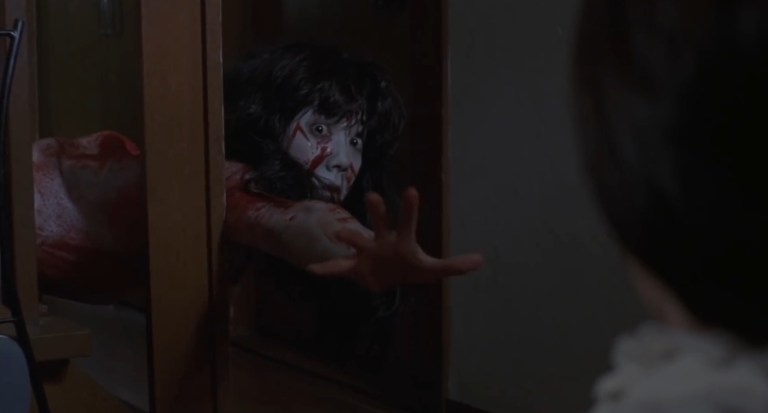
Ju-On: The Grudge is told in a non-linear format, showing viewers several stories separated into chapters. The house itself and the spirits within are a common thread between characters who may otherwise have almost no connection to each other. In this way, the house and its curse are the stars of the film. The violent origins of the curse are revealed by the end of the movie, but the results are shown throughout. People who visit the house are confronted with the vengeful spirits who reside within, most notably a little boy named Toshio and a woman named Kayako. Once the spirits focus on someone, the person is tormented until the house takes them as well.
A Tale of Two Sisters (2003)

Like many of the greatest haunted house movies, A Tale of Two Sisters (2003) infuses intense psychological horror with supernatural occurrences to create a scenario that sticks with you long after the film has ended. The movie is inspired by a Korean folktale, “Janghwa Hongryeon Jeon,” about sisters who are horribly abused by their cruel stepmother. A Tale of Two Sisters is one of multiple adaptations of the same story, but it easily rises to the top of the list thanks to its eerie presentation, beautiful imagery, and memorable twists.
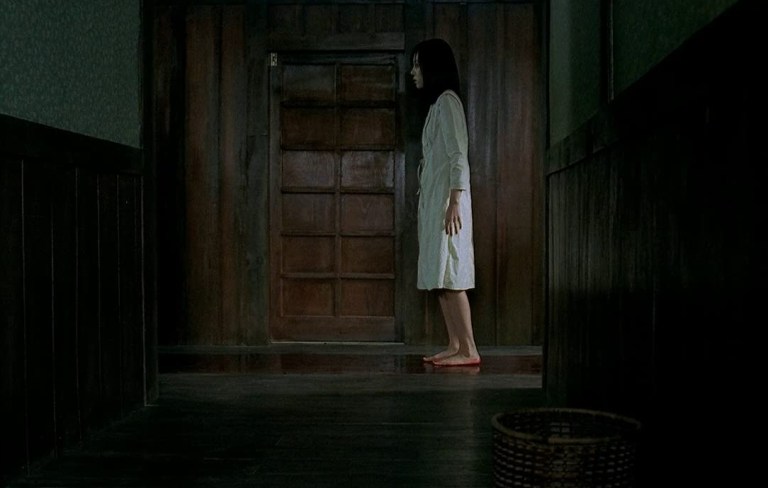
Su-mi (Im Soo-jung) is a teenage girl who is protective of her younger sister Su-yeon (Moon Geun-young). Su-mi does not get along with her stepmother Eun-joo (Yum Jung-ah), and timid Su-yeon gets caught in the middle of their mutual resentment towards each other. At the same time, it becomes apparent that something supernatural is going on within the house that may have something to do with the rising tension within the family. The plot of A Tale of Two Sisters is difficult to summarize without giving too much away, because much of the enjoyment comes from the moment when all of the seemingly disparate elements come together for a truly great reveal. Any fan of haunted house movies or of South Korean horror movies should absolutely put A Tale of Two Sisters on their must-watch list.
The Conjuring (2013)

The Conjuring (2013) delivers a great horror experience that feels a lot like a classic haunted house film. The movie is about a family who moves into a new house and almost immediately begins to experience paranormal events. For about the first half of the film, the haunting inside the house is expressed mostly through sounds, smells, doors that open on their own, and the occasional flash of something in the background. The reactions of the characters are really what drive home the horror of the scenario, and in that way The Conjuring effectively emulates a long tradition of haunted house movies where the fear comes from the unknown and unseen.
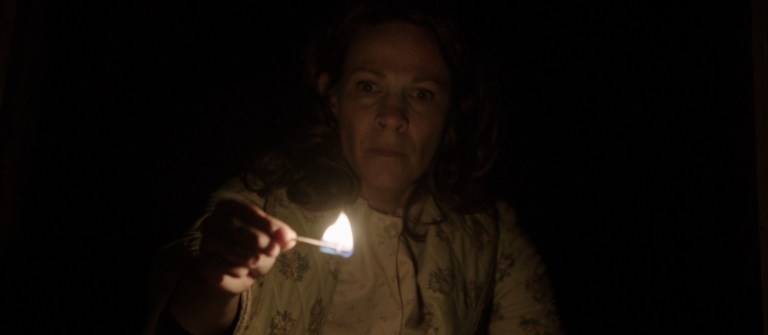
The second half of The Conjuring does feel more modern in that it shows a lot more in the way of ghosts and other entities, and special effects are on display in some really fun ways. The blending of styles and influences is very effective, making The Conjuring easily one of the best haunted house movies of the 2010s. The film spawned The Conjuring Universe consisting of various sequels and spin-offs, but only some of the Annabelle stuff (particularly Annabelle: Creation) can come close to matching what was accomplished with The Conjuring.
More Good Haunted House Movies
- House on Haunted Hill (1959) – Directed by William Castle and starring Vincent Price, this fun and gimmicky movie is about a millionaire who offers a cash prize to anyone who can stay in his haunted house for a full night.
- 13 Ghosts (1960) – Another fun movie from William Castle, about a family who inherits a house haunted by 12 ghosts who are looking for a 13th ghost to free them. Notable for its theatrical release which used a form of 3-D dubbed “Illusion-O.”
- Burnt Offerings (1976) – A great haunted house movie starring Oliver Reed, Karen Black, and Bette Davis about a family that begins to fall apart after renting a country house for the summer.
- The Shining (1980) – Though it doesn’t take place in a house, this Stanley Kubrick classic starring Jack Nicholson and Shelley Duvall is similar enough to a haunted house movie to warrant a mention on this list. Also, it’s one of the best horror movies (in a house or otherwise) of all time.
- House (1985) – William Katt stars in this horror comedy about an author who moves into his deceased aunt’s house which is haunted by all sorts of ghosts, poltergeists, monsters.
- Ghost Ship (2002) – Instead of a house, a ship is haunted by the spirits of the dead. Ghost Ship is most notable probably for its gory opening scene that shows part of the ship’s deadly history.
- Monster House (2006) – An inventive animated movie where the house itself is a monster.
- Paranormal Activity (2007) – This popular found footage movie about a couple investigating a haunting in their house uses well-known tropes associated with ghost hunting to great effect.
- Lake Mungo (2008) – This twisty pseudo-documentary begins with the drowning death of teenage Alice Palmer, and it tells the story of the supernatural phenomena experienced by her family after her passing.
- The Haunting in Connecticut (2009) – A family rents a house that used to be a funeral home, and one of the boys becomes the focus of a malevolent haunting.
- Insidious (2010) – Directed by James Wan and written by Leigh Whannell, this movie is about the struggle of parents whose son becomes lost in a spiritual plane.
- Dream House (2011) – Ghostly happenings in a home unravel a mysterious crime committed there, a crime that may not be over for its new inhabitants.
- The Woman in Black (2012) – From Hammer Films, Daniel Radcliffe stars in this gothic tale of a lawyer in the early 1900s who becomes entangled in a mystery at a haunted mansion.
- Housebound (2014) – Under house arrest with her mother, Kylie (Morgana O’Reilly) becomes convinced that their home is haunted in this horror comedy.
- Hell House LLC (2015) – This is a standout found footage movie set in an abandoned hotel that is used as a haunted house attraction. Though not a real haunted house movie, its scares are similar enough (and good enough) to mention it on this list.
- We Are Still Here (2015) – Starring Barbara Crampton, this film features a deadly haunting at a house that used to be a funeral home run by people who stole and sold corpses.
- Crimson Peak (2015) – Guillermo del Toro wrote and directed this beautiful gothic movie about a newly-married author who becomes haunted by ghostly visions in her new home.
- I Am the Pretty Thing That Lives in the House (2016) – The mysterious death of a young woman haunts a hospice nurse (Ruth Wilson) caring for an aging writer (Paula Prentiss).
- Deep House (2021) – This unique twist on the genre is about a haunted house that rests at the bottom of a lake.
A Very Brief History of Haunted House Movies
Few things in horror cinema are more iconic than a haunted house. Even just the phrase “haunted house” brings to mind some very specific images: creaks and groans echoing through empty hallways, the movement of a shadow in an otherwise still room, and a cold chill from an unexplainable source. The iconography is as recognizable as it is chilling.

The foundation of the modern haunted house movie (at least, in the Western world) resides in gothic literature. The Castle of Otranto (1764) by Horace Walpole is usually cited as the first gothic novel. The story blends tragic romance, a dark prophecy, and death inside a haunted castle. Gothic fiction would evolve over the decades to reflect the changing tastes and values of society. By the late nineteenth century, literature such as The Turn of the Screw (1898) depicted hauntings in homes which were more relatable than faraway castles.
By the time motion pictures came along, creepy old houses were a staple of the horror genre. It makes sense then that Georges Méliès short film The House of the Devil (1896), widely considered to be the first horror film ever, is a haunted house movie. Many depictions of hauntings in early films were either played for comedy or were revealed to be the result of non-supernatural trickery by humans. These types of movies generally came to be grouped together as “old dark house” films which combined comedy, crime, and mysteries, but not necessarily ghosts.

The Uninvited (1944) proved that audiences were eager to take haunted house movies seriously. Going forward, increased use of symbolism and psychological elements helped haunted house movies better resemble the literature that had inspired them. Over the years, advances in special effects allowed directors to show more supernatural spooks than before. In the 1970s, The Exorcist (1973) popularized a terrifying demonic element in the genre. Then in the 2000s, ghost-hunting shows and found footage movies led to films like Paranormal Activity (2007).
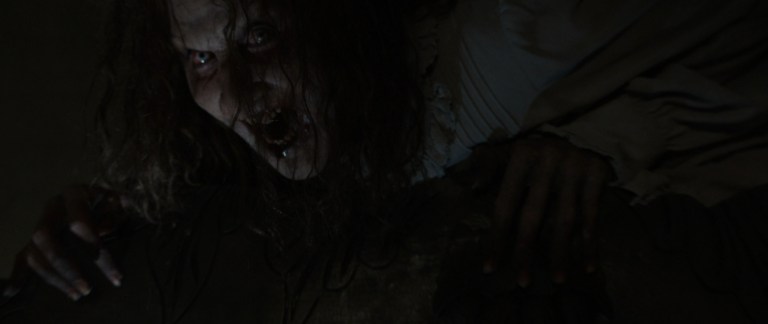
For this list, a haunted house movie is defined as a supernatural horror movie where a house is one of the primary focuses of the scares. Hauntings are generally confined within the house and the property it’s on. Hauntings may be the result of ghosts, but that isn’t always the case. More often than not, the greatest haunted house movies combine the dark history of a home with the psychological vulnerability of one of its inhabitants. Listed below is a collection of the absolute best movies that fit the above criteria.
